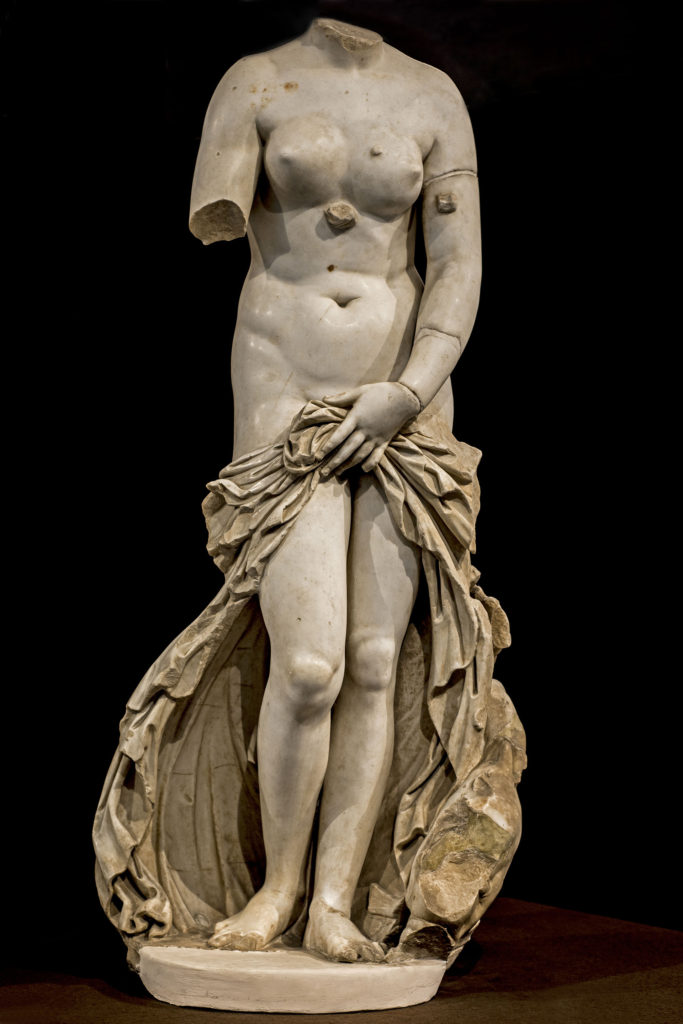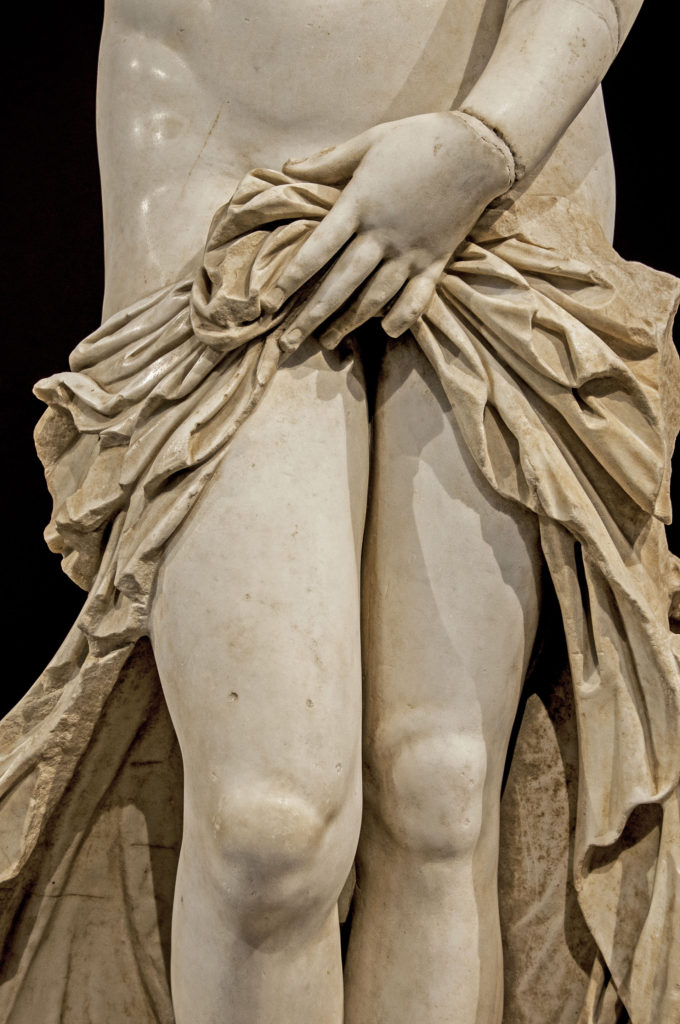Venus Anadyomene, also called Venus Landolina, is a deity who “rises from the sea”, just like the city of Syracuse.
The statue, a copy from the Roman age in the 2nd century AD, is kept at the “Paolo Orsi” Archaeological Museum in Syracuse.

The goddess has no head or right arm, with which, according to iconography, she uses to cover her breasts. In her left hand she holds a cloth dropped on her hips, which opens theatrically blown by the wind, revealing the goddess’ legs.
 The statue is full-figured with round breasts and ample hips. She is a carnal and opulent goddess, like the Sicilian land.
The statue is full-figured with round breasts and ample hips. She is a carnal and opulent goddess, like the Sicilian land.
During his tour of Sicily, Guy de Maupassant fell victim to the charm of the Syracuse Venus, describing the statue in the following way: “No head, missing an arm, but never the human form seemed to me most wonderful and seductive.”